 |
Newsletter |
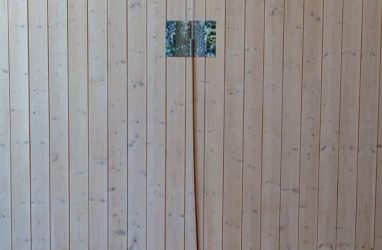 My dear readers, One thing that Hollywood, George Bush and the depressing illogical conclusion of oppression and prejudice, Trump, generally have decided they need to tell the world is that there are heroes and there are villains, goodies and badies, this side and that side. Oh sure, (perhaps) we tell ourselves, of course it is a bit more complicated than that, just look at our parents! But then, do we really want to admit of ambivalence, in the true sense of that word, of two, possibly opposed things being held in play simultaneously? How much better to just remove evil individuals and promote individual heroes. Bish, bash, bosh, erase the T-Rex despot and all will be well. Art (gosh, I think this may be the first time I’ve started a sentence with this resounding three letter word) often relishes in ambivalence, gathering its various tools, techniques and processes to drive a wedge between the indulgence and dangers of binary thinking. Look this way and that, it winks, here are a collage of possibilities, and not just those of the false choices of commodity capitalism. Coincidences and stumbling blocks establish meshworks of possible patterns of relations. Really, it seems, art is often about finding ways to ‘manage circumstances in the economy of coincidence’. You bring things, people, matter together and then you don’t just watch what happens, but you manage and aid situations, as far as one can with responsibility, with humour, with pleasure. ‘Managements of circumstances in the economy of coincidences’ is how Robertas Narkus describes his practice. And I am hugely excited to see what circumstances will be produced and managed in his first solo UK show at David Dale, Glasgow, with Rupert’s Yates Norton curating (or perhaps rather assisting in managing) the mesh of possibilities and ambivalences in Narkus’ ongoing project, Prospect Revenge. You may know Robertas not only from his wide-ranging practice, which you may have seen if you were in London or recently in Kaunas, but also from his managerial prowess in making an ‘artist day care centre’, Autarkia, a restaurant, Delta Mityba, and now planting in the depths of a Soviet rocket factory the seeds for a studio and exhibition complex. Our residents, Rasmus Myrup, Kah Bee Chow and Lucy A. Sames, continue to work on their projects, with Kah Bee opening a show at Editorial in Vilnius on the 9th of November. We know they’ve been up early to see the mists rise above the unseasonably hot fields (thanks to Instagram surveillance), but that hasn’t stopped them from being a vivacious team this month, for which I am very grateful. As ever, you can keep up to date with my own mesh of activities (mesh, not mess) on instagram, our website, and facebook. Rupert Image credits: Santiago Reyes Villaveces 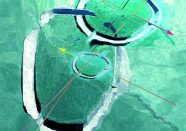
In residence
Lucy A. SamesLucy A. Sames is a curator and researcher living and working in London. She is Co-Director and Curator at Res. At Rupert, Lucy will be working on a chapter of her PhD thesis on ancient stone assemblages through the understanding of them as distributed components of mystical technologies – either awaiting assembly, or as deconstructed monuments. During this time she will conduct fieldwork for this research by travelling to visit ‘alkas’ (open air sacred sites) and glacial erratics in the vicinity of Rupert, Vilnius and Kaunas. 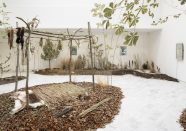
In residence
Rasmus MyrupRasmus Myrup is a Danish artist and curator living and working between Paris and Copenhagen. Working primarily with sculpture and drawing, his work is a synthesis of the big and the small investigating humanity’s natural roots in the context of personal human emotions and relations. At Rupert, Myrup will continue his research in to the deep human past, and the time when we shared Europe with the Neanderthals. With this line of research and the local nature surrounding Vilnius, he will produce new works for an exhibition in Paris in early 2020. He will also be researching the end of the last ice age in Northern Europe as a parallel narrative to current climate change. |
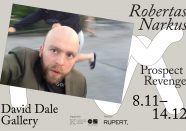
Exhibition
8 November - 14 December Robertas Narkus: Prospect RevengeIn collaboration with David Dale Gallery, Glasgow, Rupert is pleased to announce a solo exhibition of Robertas Narkus, opening on the evening of the 8th of November, 2019. The exhibition, ‘Prospect Revenge’, continues Narkus’ wide-ranging work exploring conversion, states of ambivalence, absurdity, use and uselessness. The exhibition will be the first solo presentation of the artist’s work in the UK. More info. 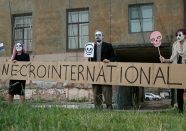
Public Talk
30 October, 7 pm Cadavre Exquis: How the dead speak out in Russian art. From necro-realism to post-exoticismRupert is pleased to invite you to the public talk by curator Irina Aksenova on the 30th of October, 7 pm which will take place in Autarkia, Naugarduko str. 41, Vilnius. The metaphorical decolonisation of the afterworld is a specific topic of much Russian contemporary art. These practices counteract official political and cultural activities which, in different ways, involve the dead in public discourse or re-produce the dead-born ideas and practices. Identifying and even forming solidarity with the corpse as a form of resistance to a political regime has its roots in the late Soviet Union. Necro-realists with their trashy zombie lifestyle and art were an excessively ironic reaction on Brezhnev’s epoch of stagnation. More info. 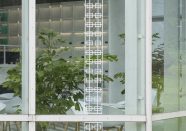
In residence
Kah Bee ChowKah Bee Chow (Malaysia/New Zealand/Sweden) is an artist from Penang, Malaysia and Auckland, New Zealand, living and working in Malmö, Sweden. Whilst at Rupert she will be researching the parallels between traditional forms of divination such as the I Ching and algorithmic forecasting, along with how they diverge in sensibility, correlation and attitudes: what kind of texts and systems they produce to make the unknowable known. She will also investigate the practice of feng shui in relation to the writing of Keller Easterling taking the quote “Human constructs are a form of economic occult” as a starting point. |
